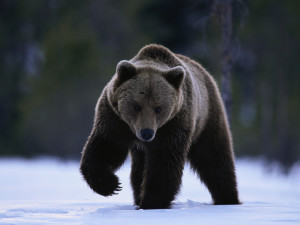Hype is nothing new for Washington Nationals outfielder Bryce Harper. At just 16 years of age, he was featured on the cover of Sports Illustrated and labeled “Baseball’s Chosen One.” He was profiled in his own ESPN special prior to being eligible for the Major League Baseball amateur draft. Just a few weeks ago, he was shockingly listed as one of the top 100 MLB players of all-time. In a local radio interview this past offseason, he suggested that the interviewer shouldn’t sell him short when projecting him as MLB’s first $400 million player, and some within the industry even believe that he might still be a bargain at $500 million. At 23 years old, Harper is basically expected to maintain this lofty career trajectory, become the most highly paid player in MLB history, and waltz into the Hall of Fame twenty years from now. No pressure, kid. Except that the former #1 overall pick and youngest unanimous MVP in baseball history hasn’t quite lived up to expectations this season. This season’s .234/.378/.443 slash line pales in comparison to the .330/.460/.649 line that he produced last season. So what gives? Is it a down year? Bad luck? Or has Harper just been overhyped?
Let’s take a look at Harper’s profile to determine what’s caused this dip in production. Here are a few thoughts and observations:
• His walk rate is about the same and his strikeout rate is lower than it was a year ago. In 2015, Harper had the second highest walk rate (19.0% BB%) in baseball and the sixth best BB/K ratio (0.95) among all qualified hitters. This season, he has the highest walk rate (18.6% BB%) in baseball and the second best BB/K ratio (1.09) behind Ben Zobrist. Harper’s 17.0% K% is three percent lower than last season’s 20.0% mark too. These numbers reflect that fact that…
• His overall plate discipline is much improved. Harper’s O-Swing% is down 1.1% and his SwStr% is down a whopping 2.7%. Consequently, both his O-Contact and Z-Contact percentages are both improved as well, resulting in a career high 80.1% Contact%, which is up 4.7% from 2015. So Harper is chasing fewer pitches outside of the strike zone and making contact at a much higher rate than during his MVP campaign. Why, then, is his production down so much? It could be due to the fact that…
• Pitchers are staying away from him. MLB pitchers have determined that the best way to contain Harper’s power is to keep the ball down and/or outside. 75.4% of the total number of pitches that Harper has faced this season have been characterized as being at knee height or lower and/or on the outer third of the plate or beyond. Harper hasn’t consistently been able to adjust to this approach, as…
• His quality of contact has decreased. Not only the quality, but the type of contact that he’s made has changed as well. Harper’s line drive percentage is down 6.8% from last season to 15.4% this year, and his infield flyball percentage has nearly doubled from 5.8% to 10.5%. His soft hit rate has nearly doubled as well, increasing from 11.9% to 22.3%. The change in approach to Harper and the resulting difference in quality of contact could help to explain why…
• His power production is down significantly. While twenty homers in early August is certainly nothing to be ashamed of, Harper’s ISO is down over 100 points (from .319 to .209) from last season, and his average flyball distance is down a whopping 17.41 feet from last year. In fact, Harper’s 298.85 ft average distance ranked 33rd out of 284 qualifiers last season, while his 281.44 ft average distance ranks 147th out of 252 qualifiers this year. From a fantasy perspective, one thing that helps to offset this drop in power is the fact that…
• He’s running more than ever. Harper’s 15 stolen bases are almost double his combined total from the previous two seasons (8 SBs from 2014-15), and his 22 attempts represent his highest total since his rookie season when he attempted to steal 24 times.
Bottom line: Bryce Harper is one of the best players in baseball. This is still true despite his slightly disappointing season to date. But perhaps it’s only considered to be disappointing due to the extremely high expectations that were placed on him entering this season. He is on pace for roughly a 30/20 season after all. That would arguably only be considered disappointing for Mike Trout and Harper himself. His on-base skills and overall plate discipline remain among the best in the game (if not the best), and he’s stealing more bases than ever before. However, he’s struggled to adjust to the pitching approach that’s been utilized against him this season, as the quality of contact and power numbers indicate. In dynasty and OBP formats, Harper is still easily a top 5 player, but in redraft leagues, I’m not confident that he’ll be able to make the necessary adjustments over the last eight weeks of the season to regain that elite status in the very near future.
Final Verdict:



